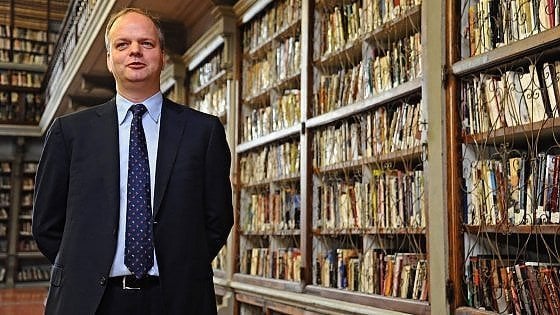Logo & Website Created for the Uffizi

The Uffizi Gallery has taken a large step in both digital design and putting a halt to scalpers by giving the centuries-old museum a logo.
The new design – a G and U woven together- represents the unity of all its parts: The Uffizi, the Vasari Corridor, Palazzo Pitti and the Boboli Gardens for the first time since they have been unified in 2014. The logo has been designed by Carmi and Ubertis, a Milan-based brand consultancy, to represent both the rich tradition of the Gallery and the innovative future.
The website has been developed by a Florence company, Cantiere Creativo web design along with the Uffizi’s Digital Communications Department. The creation of the website invited all of the Gallery’s employees to give their input during the design process.
Due to the large number of fake websites selling overpriced tickets to potential museum goers, the Uffizi Galleries have decided to create new website so future customer will be able to get into direct contact with the museum. Many of the fraudulent websites have been created outside of Italy and cannot be taken down without tedious lawsuits and time.
Since the Uffizi cannot shut down these websites directly, they hope the promotion of their new logo will properly inform visitors where to purchase legitimate tickets. The logo has been copyrighted so if any site uses it, they will be taken down immediately.
Uffizi director, Elke Schmidt has made attempts to raise awareness about false ticket sales by making public announcements outside of the Uffizi in Spring 2016. He was initially fined in 2016 for not receiving a proper city permit for the speakers. In September 2017,, he was fined again for an unsolicited public announcement.
Schmidt hopes that this website will make potential visitor’s online experience easier and more effective. He believes that the brand will do much more than just simply trademark the museum.
“This is not only to define and defend the Uffizi Galleries identity and aims, but also to remind us that their collections were tied to Florence in 1737 by the last descendant of the Medici family, Anna Maria Luisa,” said Schmidt in a written statement released by the museum.
To read more in Italian visit Florence’s La Repubblica news site.
THE DIRECTOR’S FUTURE PLANS
Within a month of announcing he will be leaving the Uffizi, Eike Schmidt, museum director, has been hit with a second fine. In the spring of 2016, Schmidt was originally fined for installing speakers on city property outside the Uffizi without authorization. The speakers were placed to transmit messages to warn tourists and museum visitors in both English and Italian against ticket scalpers.
Over a year after the fine was paid, Schmidt has been charged with a €2.300 ticket for not receiving a proper permit to advertise proper ticket channels. Schmidt plans on working to resolve the issue with the mayor of Florence, Dario Nardella.
Schmidt has accepted a position to head the Kunsthistorisches Museum in Vienna two years before his term with Uffizi is over. Schmidt began his role as the first foreign director of the Uffizi Gallery in 2015. The news was announced by the Austrian Minister of Culture at a press conference on September 1.
He will also, continue to head Uffizi until his contract expires at the end of 2019. He accepted the position with the Kunsthistorisches before entertaining the possibility of renewing his contract with Uffizi.
Before Schmidt was offered the position at Uffizi, he was the curator and director of the Sculpture, Applied and Textile Arts Department at the Minneapolis Institute of Arts since 2009.
Schmidt, who has studied and worked all over the world, including Washington D.C.’s National Gallery of Art and Sotheby’s in London, explained that he does not want to stay in one position for too long.
He said that he has “accepted the proposal for this new adventure as a sign of the new spirit of the Ministry of Cultural Heritage’s reform: that is, do not stay nailed, fixed in one place, but to contribute to change and move towards other experiences.”
The Kunsthistorisches Museum contains noteworthy works of both Italian and German art, including “Madonna with the Christ Child and Saint John the Baptist” by Raphael.
To read more in Italian, see Florence’s La Repubblica news site. (deanna carbone)
